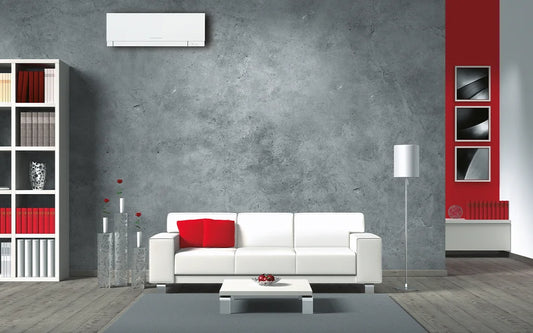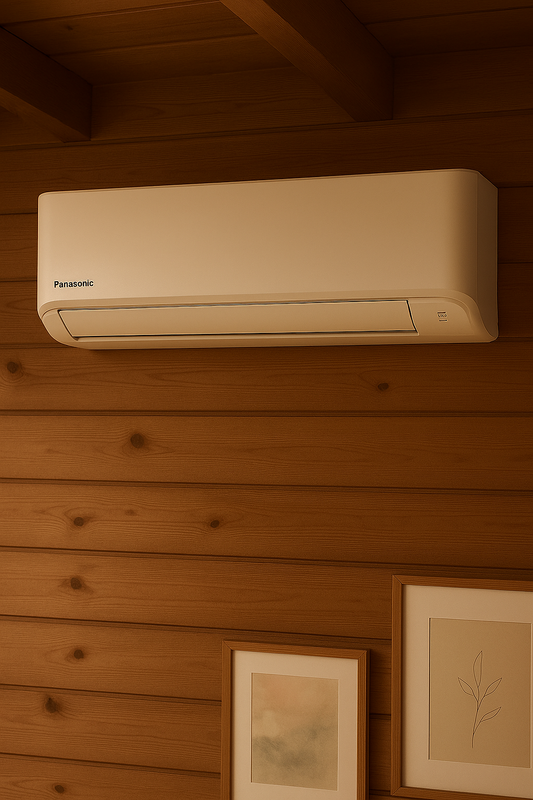Installation av Luftvärmepump
Att installera en luftvärmepump är en effektiv och miljövänlig metod för att upprätthålla en bekväm inomhusmiljö samtidigt som man minskar energiförbrukningen. I denna artikel ska vi utforska processen för installation av luftvärmepump, dess fördelar och användningsområden samt vanliga frågor som kan uppstå.
Definition och Bakgrund
En luftvärmepump är ett system som använder utomhusluftens värmeenergi för att värma eller kyla inomhusmiljön. Genom en kompressionsprocess kan luftvärmepumpen överföra värmen från utomhusluften till inomhusutrymmet, vilket ger en energieffektiv uppvärmningsmetod.
Fördelar och Användningsområden
Installation av en luftvärmepump erbjuder flera fördelar, inklusive minskade energikostnader, minskad miljöpåverkan och jämnare inomhustemperatur. Luftvärmepumpar kan användas för både uppvärmning och kylning, vilket gör dem mångsidiga och passande för olika klimat och boendemiljöer.
- Minskar energikostnader genom effektiv värmeöverföring.
- Minskar miljöpåverkan genom att minska behovet av traditionella uppvärmningsmetoder.
- Ger jämnare inomhustemperatur och ökad komfort.
- Kan användas för både uppvärmning och kylning, vilket ökar dess användbarhet.
Relaterade Tekniker, Begrepp eller Variationer
Det finns olika typer av luftvärmepumpar, inklusive luft-luftvärmepumpar och luft-vattenvärmepumpar. Luft-luftvärmepumpar överför värmen till luften inomhus medan luft-vattenvärmepumpar kan användas för att värma vatten för uppvärmningssystem eller varmvatten. Dessutom finns det också vätskebaserade värmepumpar som använder jord eller vatten som värmeenergikälla.
Vanliga Frågor (FAQ)
Hur lång tid tar det att installera en luftvärmepump?
Installationstiden för en luftvärmepump varierar beroende på faktorer som storlek på pumpen, typ av installation och befintligt värmesystem. Generellt sett kan en standardinstallation ta mellan en till tre dagar.
Kan jag installera en luftvärmepump själv?
Eftersom installation av en luftvärmepump kräver kunskap om både elektriska system och värmepumpsteknik, rekommenderas det att anlita en certifierad installatör för att säkerställa korrekt installation och funktion.
Hur underhåller jag en luftvärmepump?
Regelbunden rengöring av luftfiltren och en årlig service av en kvalificerad tekniker är viktiga steg för att bibehålla luftvärmepumpens prestanda. Det är också viktigt att hålla utomhusenheten fri från skräp och vegetation.
Sammanfattning
Installation av en luftvärmepump är en effektiv metod för att upprätthålla en bekväm inomhusmiljö samtidigt som man minskar energiförbrukningen. Genom att utnyttja utomhusluftens värmeenergi erbjuder luftvärmepumpar flera fördelar, inklusive minskade energikostnader och minskad miljöpåverkan. Genom att förstå installationsprocessen och dess fördelar kan man fatta välgrundade beslut gällande uppvärmning och kylning av bostaden.
Installation Process
The installation process of a heat pump involves several steps to ensure its proper functioning and efficiency. These steps may include site evaluation, unit placement, electrical connections, refrigerant line installation, and system testing. Proper installation is crucial to the performance and longevity of the heat pump.
Energy Efficiency Considerations
When considering the installation of a heat pump, it's important to evaluate the energy efficiency of the unit. Look for heat pumps with high Seasonal Energy Efficiency Ratio (SEER) and Heating Seasonal Performance Factor (HSPF) ratings, as they indicate higher efficiency and lower energy consumption. Additionally, selecting the right size and type of heat pump for the specific heating and cooling needs of the space is essential for optimal energy efficiency.
Environmental Impact
By utilizing the heat energy present in the outdoor air, heat pumps contribute to reducing reliance on fossil fuels for heating, thereby lowering greenhouse gas emissions. This environmentally friendly approach to heating and cooling aligns with sustainable practices and contributes to a greener living environment.
Cost Considerations
While heat pumps offer long-term energy savings, it's essential to consider the initial investment and installation costs. Factors such as the unit's efficiency, size, and additional features can affect the upfront expenses. However, these costs should be weighed against the long-term energy savings and potential rebates or incentives for installing energy-efficient heating and cooling systems.
Case Study: Residential Heat Pump Installation
In a residential setting, the installation of a heat pump resulted in a significant reduction in heating and cooling costs. The homeowner observed a more consistent indoor temperature and noted the quieter operation of the heat pump compared to traditional heating systems. Additionally, the environmental benefits of reduced carbon emissions were a motivating factor for the decision to install a heat pump.
Regulatory and Safety Compliance
It's crucial to adhere to local regulations and safety standards when installing a heat pump. This may involve obtaining necessary permits, adhering to electrical and refrigerant handling regulations, and ensuring proper disposal of old heating systems or refrigerants. Compliance with these regulations ensures the safety and legality of the installation process.
Maintenance and Service Requirements
Regular maintenance is essential for the optimal performance of a heat pump. This includes periodic inspection of the outdoor and indoor units, cleaning or replacement of air filters, and lubrication of moving parts. Additionally, scheduling annual service by a qualified technician ensures that the system remains in peak condition and can identify any potential issues before they escalate.
Integration with Smart Home Systems
Modern heat pump models often feature compatibility with smart home systems, allowing remote monitoring and control of the heating and cooling settings. Integration with smart thermostats and home automation platforms not only enhances convenience but also enables energy-saving strategies such as adaptive temperature scheduling and automated energy usage analysis.
Geothermal Heat Pump Considerations
For properties with access to a suitable underground or underwater heat source, geothermal heat pumps offer a highly efficient and sustainable heating and cooling solution. The installation process and considerations for geothermal heat pumps differ from air-source heat pumps, requiring specialized expertise and geological assessments to harness the heat energy from the earth.
Enhanced Comfort Features
Some advanced heat pump models offer additional comfort features, such as variable-speed compressors for precise temperature control, humidity management functions, and air purification capabilities. These features contribute to a more comfortable and healthier indoor environment, addressing not only temperature regulation but also air quality concerns.
Industry Standards and Certifications
When selecting a heat pump for installation, it’s advisable to consider units that carry industry certifications, such as ENERGY STAR® qualification. These certifications indicate that the heat pump meets stringent energy efficiency and performance standards, providing assurance of its quality and environmental benefits.



